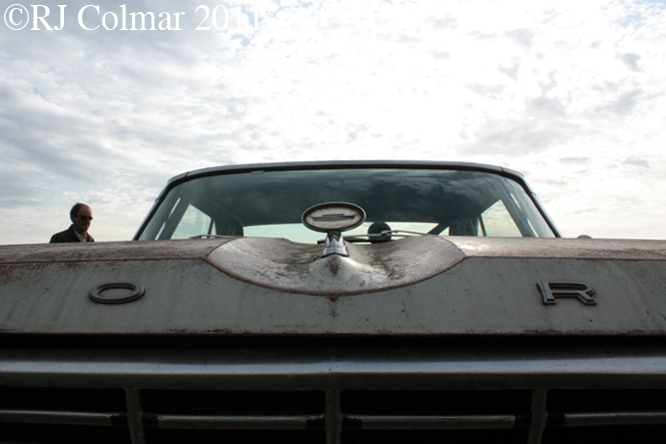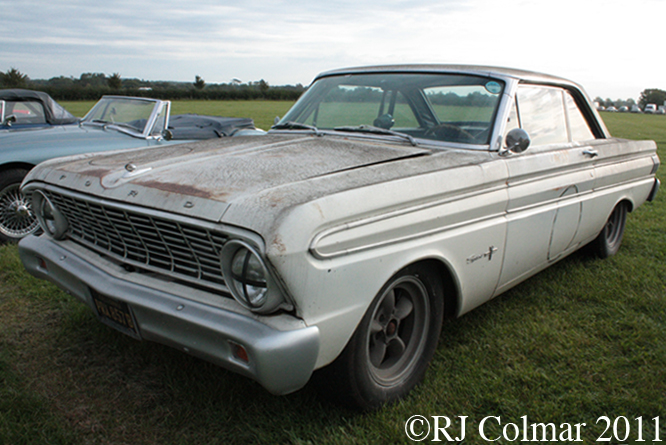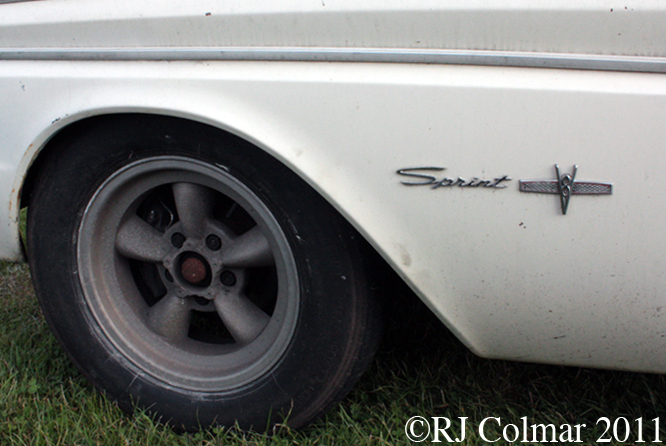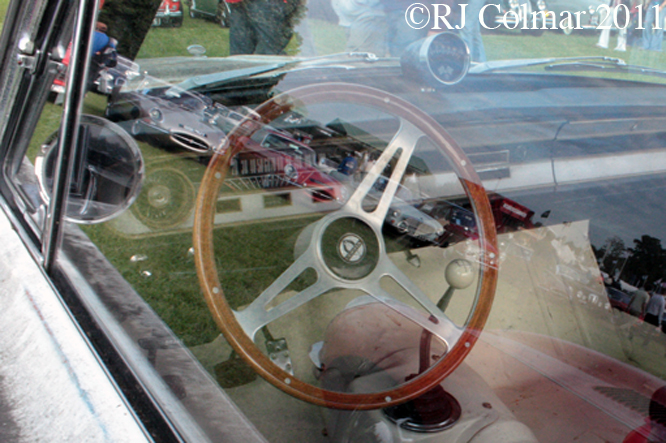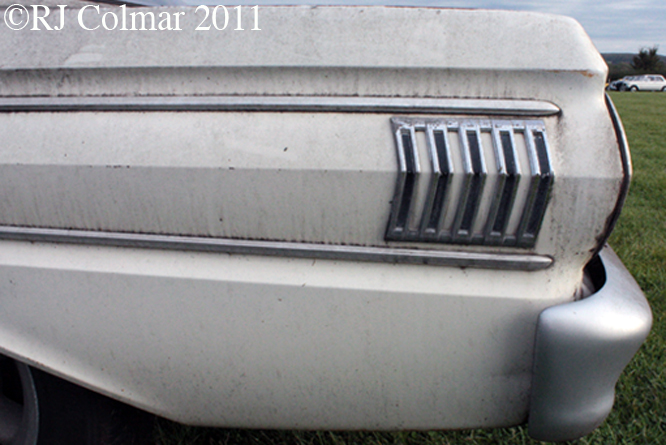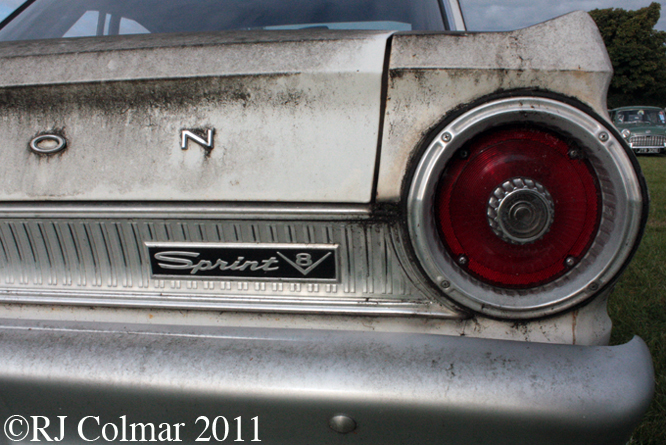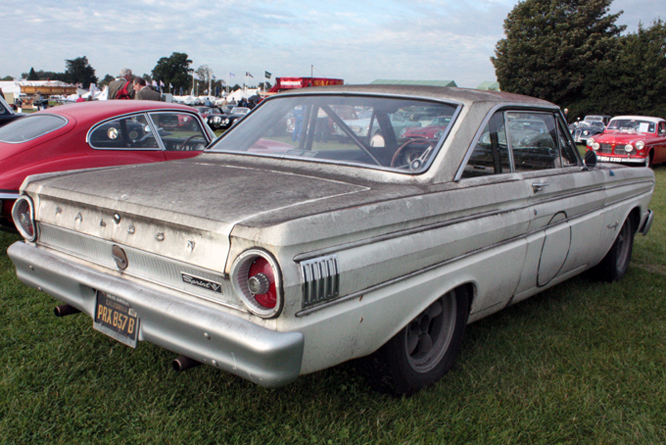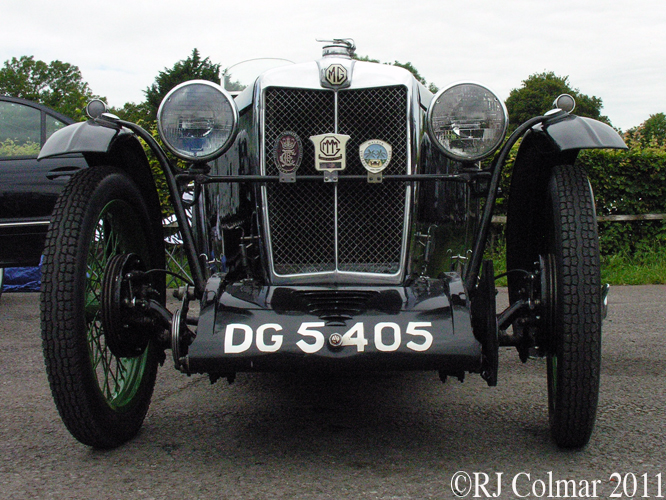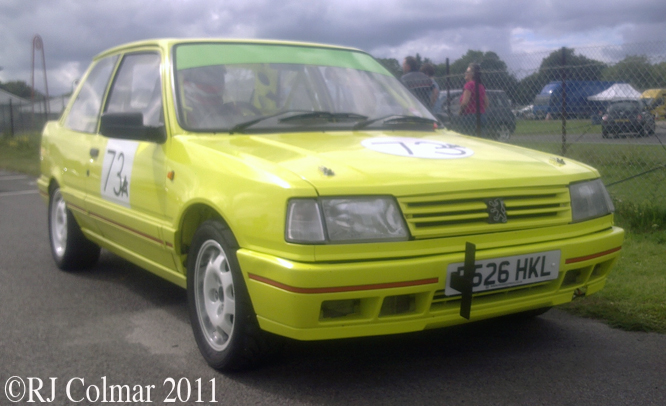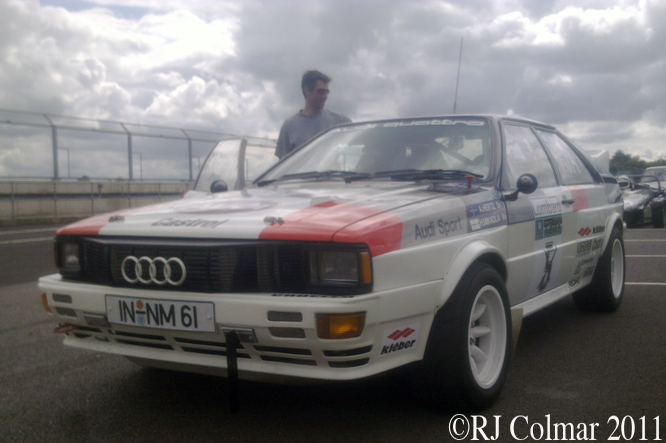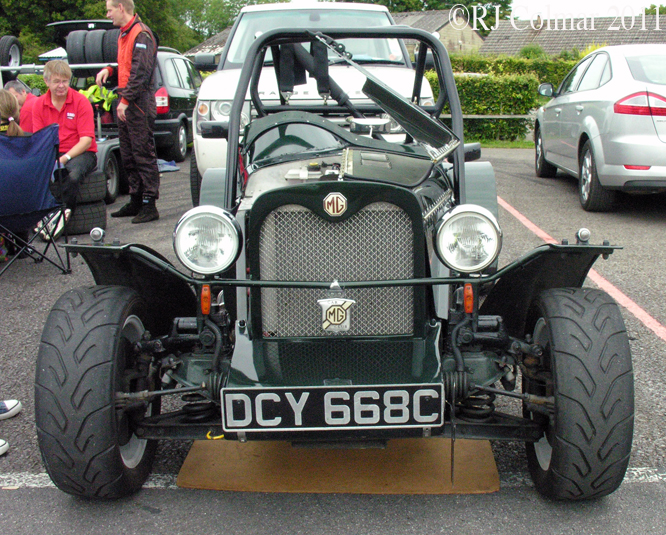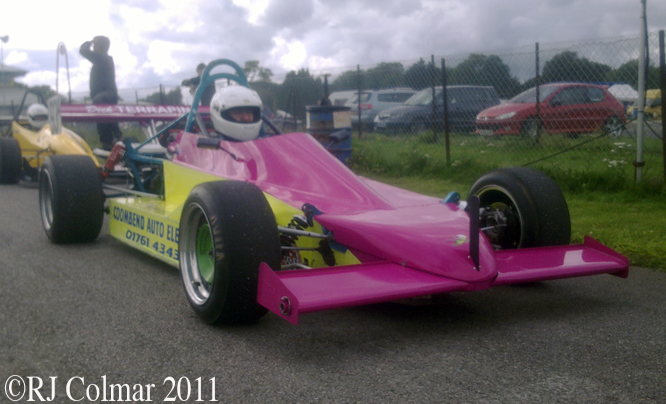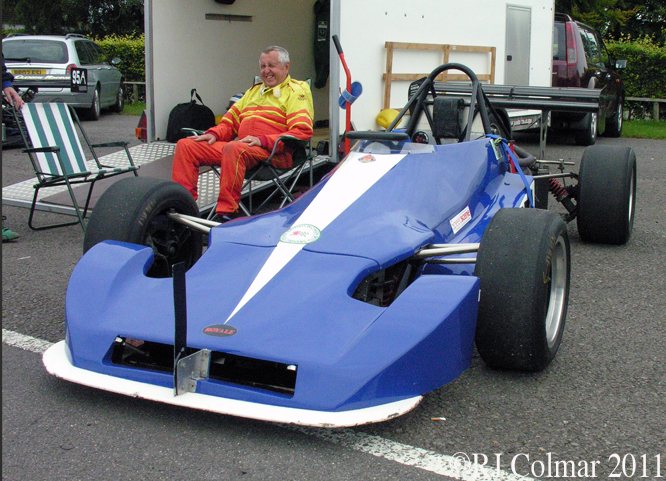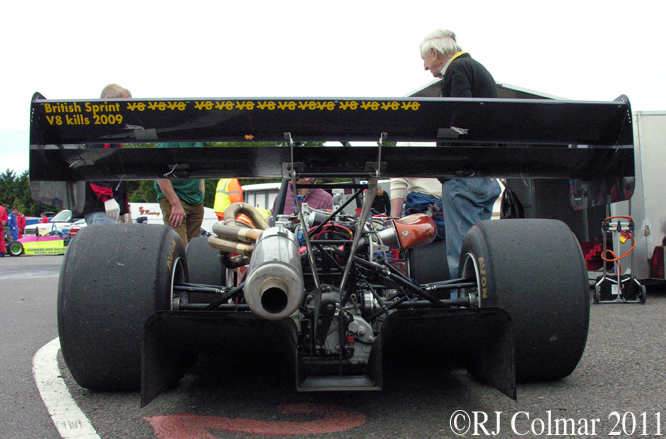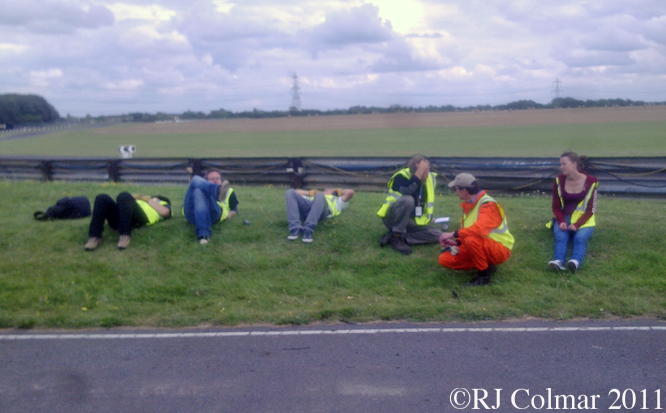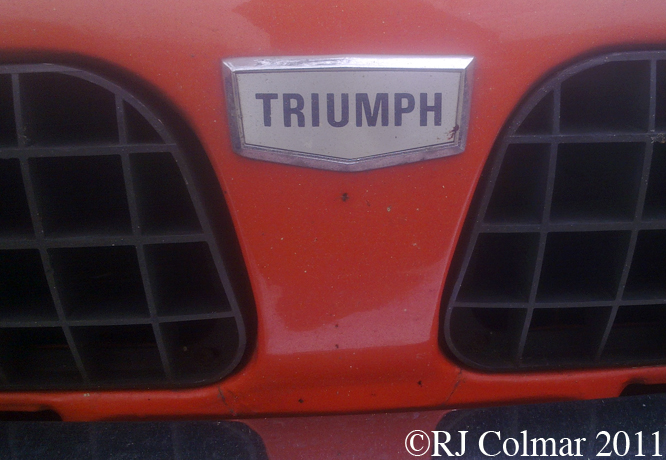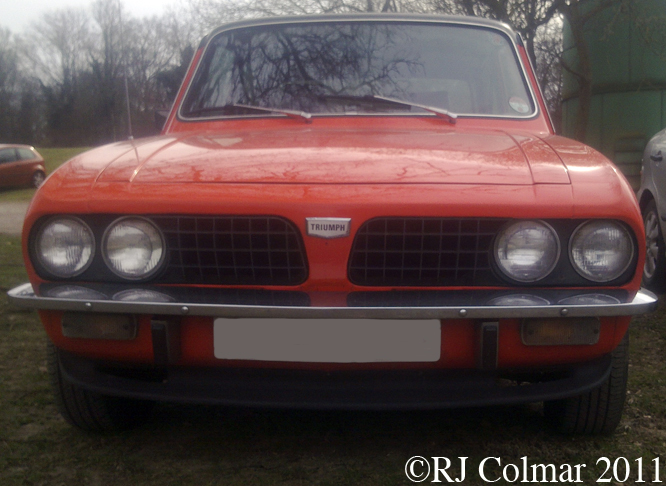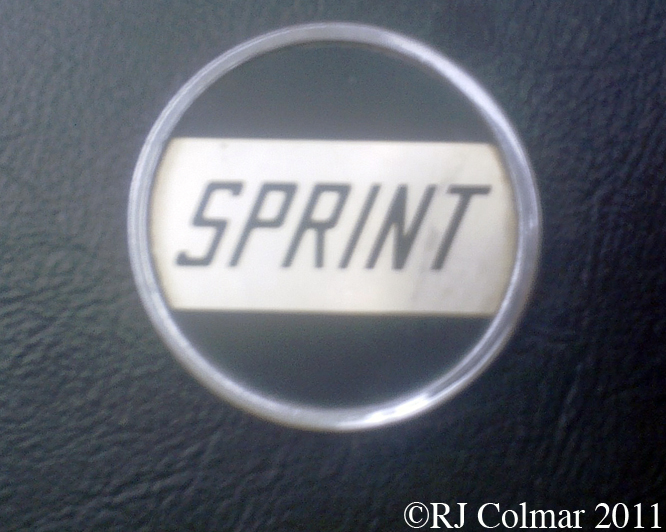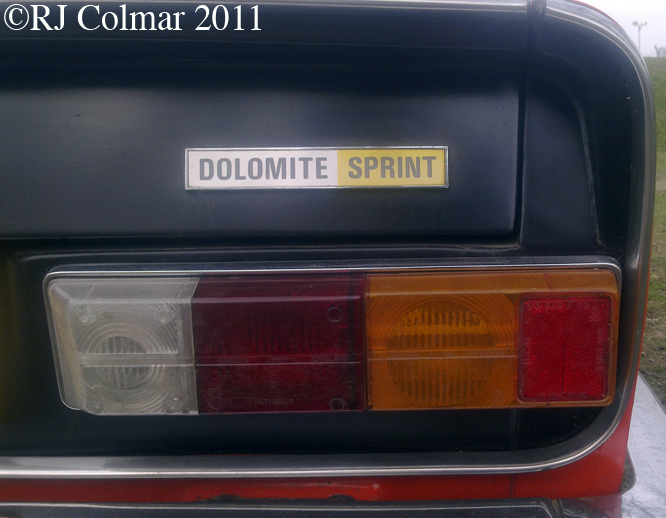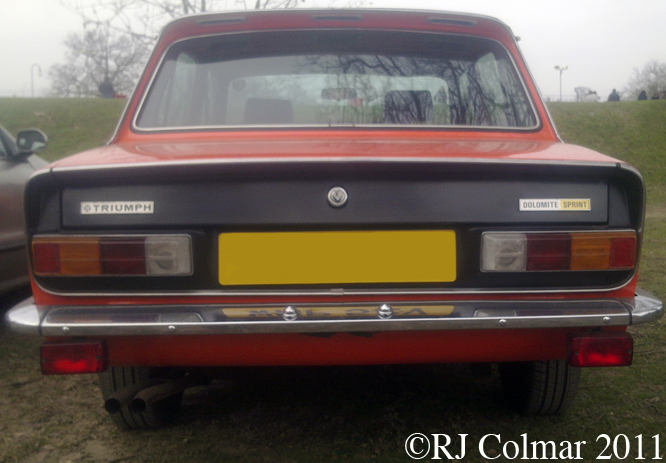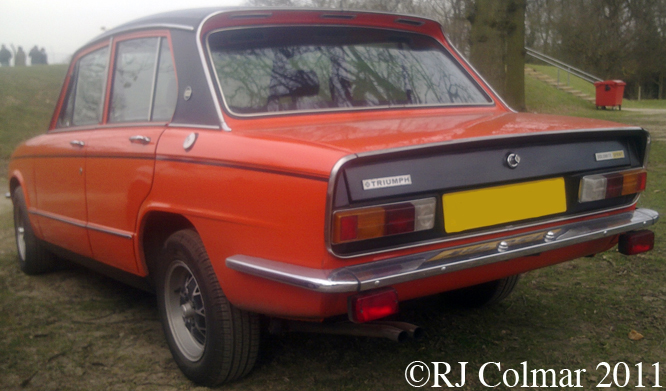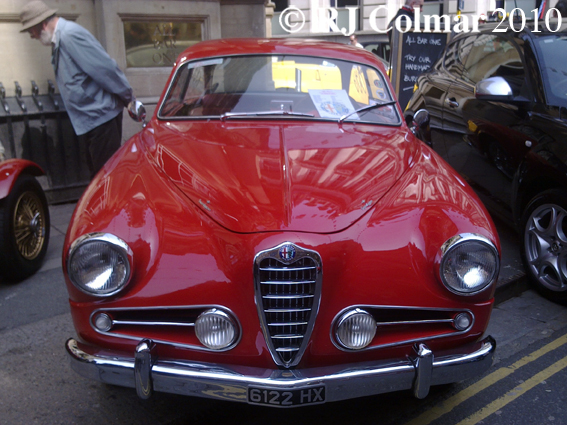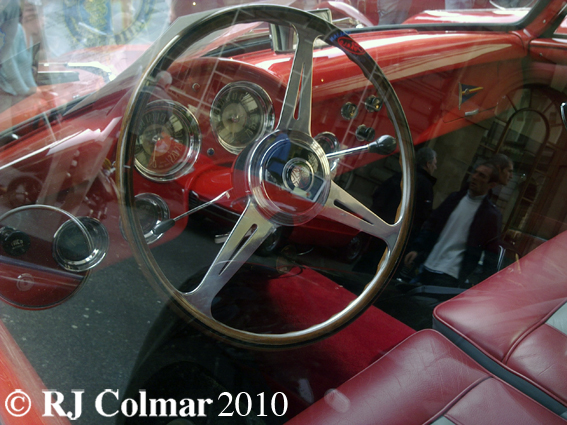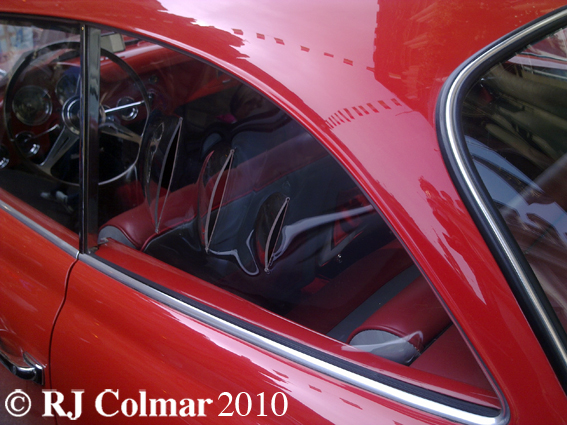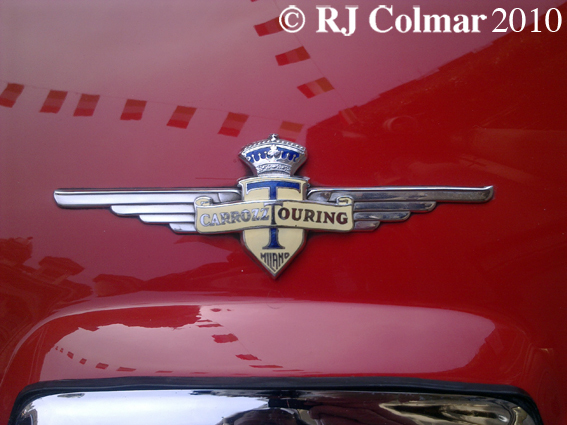The stand out car in the Goodwood car park last week was this Ford Falcon Sprint V8, there is something about the unmolested patina of old racing cars I simply find irresistible, something all to easy to underestimate that speaks of both achievement and subsequent precarious survival.
There are four strands to Ford Falcon history, the US built cars such as the one seen here which were in production from 1960 until 1970, the Argentinian built Falcons in production from 1962 to 1991, the Australian built Falcons which have been in production since 1960 and the US built Falcon ‘E series’ 8 seat vans built from 1961 to 1967.
Allegedly Edsel Ford first came up with the Falcon name for the design of a luxury car in 1935, he felt the name did not quite fit and renamed the car Mercury which was launched as a luxury brand in 1938.
The Ford Falcon was launched in 1960, like the contemporary Chevrolet Corvair, Chrysler / Plymouth Valiant, Studebaker Lark and AMC Rambler, the design evolved from market research which identified that many US families were in the market for a smaller than full size second vehicle primarily to be driven by women. The first generation Falcons were in production from 1960 -1963.
The second generation Falcon was redesigned in 1964 and aimed at a more youthful market. Falcons were available in two door, 4 door, sedan, 2 door coupé like this 1964 model, 2 door convertible, 2 door coupé utility and 3 or 5 door station wagon forms.
Six engine options were available from 2.4 litre / 144 cui in line sixes through to 4.9 litre / 302 cui Windsor V8’s along with 4 transmission options 2 speed (ford o matic) auto, 3 speed auto and 3 or 4 speed manual.
Despite over a million sales in the first two years of the first generation Falcon, second series Falcon sales tanked thanks in no small part to another vehicle in the Ford range that was based on the second generation Falcon but aimed at an even more youthful market known as the Ford Mustang which was launched in April 1964.
To try and keep sales up the Sprint V8 with 4.7 litre / 289 cui, as seen here, and later even 4.9 litre / 302 cui variations were introduced but the slightly more expensive Mustang with the same power trains was the car everyone wanted.
The secrets of this particular cars past remain hidden to me for now, a signature above the lighter on the dash looks like that of two time British Saloon car champion Jack Sears. I have not been able to find any evidence Jack drove such a car after winning the 1963 British Saloon Car Championship driving a Ford Cortina GT, a Lotus Cortina and a Ford Galaxy 500.
Thanks for joining me on this Sprint V8 edition of ‘Gettin’ a lil psycho on tyres’ I hope you will join me again tomorrow. Don’t forget to come back now !

